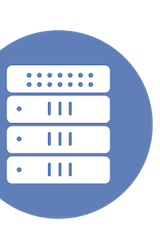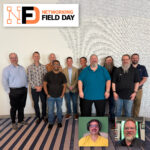|
|
This video is part of the appearance, “HPE Aruba Networking Presents at Networking Field Day 38“. It was recorded as part of Networking Field Day 38 at 10:30-12:30 on July 10, 2025.
Watch on YouTube
Watch on Vimeo
Learn about AI, deep platform intelligence, self-optimizing, observability, troubleshooting and more. Dobias van Ingen, CTO and VP for System Engineers at HPE Aruba Networking, detailed the evolution of Aruba Central, emphasizing its role in addressing common enterprise challenges like domain fragmentation, policy inconsistency, experience gaps, high operational costs, data sovereignty, and vendor lock-in. Their journey began in 2017 by unifying wireless solutions under a single operating system, followed by unifying wired networks in 2019 to provide consistent role-based policies and application visibility. The latest step involved integrating fabrics with SD-Branch/SD-WAN applications (EVPN, VXLAN) and, crucially, developing a common operational model that supports various consumption models, including public cloud, managed services, Network as a Service (NaaS), and on-premise deployment of the same cloud software.
The presentation highlighted Aruba Central’s unique unified configuration model, allowing users to manage network infrastructure through UI, CLI, or API, with changes reflected consistently across all interfaces. This is powered by a central Yang model, ensuring that configurations for roles, profiles, and services are seamlessly applied across access points, gateways, and switches, regardless of their specific device persona. A key demonstration showcased how a single authentication server profile could be configured once and then assigned to various device functions and scopes (e.g., global, regional, device group), significantly simplifying management and reducing potential errors. Furthermore, the unified architecture ensures that all feature sets are available across on-premise and cloud deployments, with minor exceptions for some AI functionalities.
Dobias also delved into user experience insights (UXI), which leverage sensors (physical or software agents) and network telemetry to provide comprehensive data on client and application performance. This includes detailed path analysis, identifying latency across hops and even into tunnels, offering crucial troubleshooting data that goes beyond traditional trace routes. The discussion then transitioned to Agent AI, the evolution beyond traditional and generative AI. Agent AI focuses on reasoning and autonomous action, allowing the system to combine vast knowledge bases with real-time network data to proactively identify issues and suggest or even schedule automated remediations (e.g., disabling an 802.11r amendment for problematic clients). This intelligence is surfaced through a “Network Copilot” interface, enabling natural language interaction for troubleshooting and automated problem-solving, along with multi-vendor operability (e.g., monitoring Cisco switches within Aruba Central) to ease transitions and prevent vendor lock-in.
Personnel: Dobias Van Ingen








